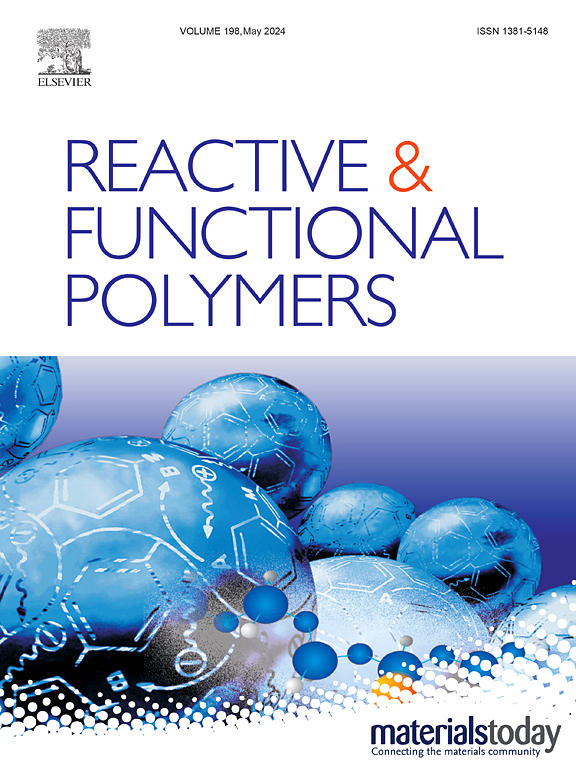Synthesis of collagen-grafted polyacrylamide hydrogel for biomedical applications
IF 4.5
3区 工程技术
Q1 CHEMISTRY, APPLIED
引用次数: 0
Abstract
The mechanical properties of extracellular matrix (ECM) mimicked by hydrogels have been extensively utilized in investigating cell-ECM interactions, employing materials such as polyacrylamide gels and polydimethylsiloxane gels. However, these materials typically require the coupling of ECM proteins to provide cell adhesion ligands, leading to complex procedures and high costs. In this study, we present a novel approach for fabricating a double network hydrogel (PAAm-Col) that combined the stable and tunable mechanical properties of the PAM network with cell-adhesive functionalities provided by the collagen network. By adjusting the ratio of acrylamide to collagen, the hydrogel's elastic modulus could be tailored while maintaining superior light transmittance, hydrophilicity, and stability. Subsequent in vitro cell studies, cryopreserved embryos culture and in vivo subcutaneous implantation of the hydrogel in mice demonstrated its efficacy in facilitating cell proliferation under varying stiffness conditions. The gels exhibited excellent biocompatibility, minimal inflammatory response, and potential for drug delivery. Furthermore, the substitution of bovine tendon type I collagen with recombinant human type I collagen in the preparation process yielded hydrogels that retained exceptional biocompatibility. This work demonstrated that PAAm-Col is a novel biomaterial for various biomedical applications.

生物医学用胶原接枝聚丙烯酰胺水凝胶的合成
利用聚丙烯酰胺凝胶和聚二甲基硅氧烷凝胶等材料,水凝胶模拟细胞外基质(ECM)的力学特性已被广泛用于研究细胞外基质相互作用。然而,这些材料通常需要ECM蛋白偶联来提供细胞粘附配体,导致复杂的程序和高成本。在这项研究中,我们提出了一种制造双网络水凝胶(PAAm-Col)的新方法,该方法结合了PAM网络的稳定和可调的机械性能以及胶原网络提供的细胞粘附功能。通过调节丙烯酰胺与胶原蛋白的比例,可以定制水凝胶的弹性模量,同时保持优异的透光性、亲水性和稳定性。随后的体外细胞研究、冷冻胚胎培养和小鼠体内皮下植入证明了水凝胶在不同硬度条件下促进细胞增殖的功效。凝胶表现出良好的生物相容性,最小的炎症反应和潜在的药物输送。此外,在制备过程中,用重组人I型胶原蛋白代替牛肌腱I型胶原蛋白得到的水凝胶保留了优异的生物相容性。这项工作证明了PAAm-Col是一种具有多种生物医学应用价值的新型生物材料。
本文章由计算机程序翻译,如有差异,请以英文原文为准。
求助全文
约1分钟内获得全文
求助全文
来源期刊

Reactive & Functional Polymers
工程技术-高分子科学
CiteScore
8.90
自引率
5.90%
发文量
259
审稿时长
27 days
期刊介绍:
Reactive & Functional Polymers provides a forum to disseminate original ideas, concepts and developments in the science and technology of polymers with functional groups, which impart specific chemical reactivity or physical, chemical, structural, biological, and pharmacological functionality. The scope covers organic polymers, acting for instance as reagents, catalysts, templates, ion-exchangers, selective sorbents, chelating or antimicrobial agents, drug carriers, sensors, membranes, and hydrogels. This also includes reactive cross-linkable prepolymers and high-performance thermosetting polymers, natural or degradable polymers, conducting polymers, and porous polymers.
Original research articles must contain thorough molecular and material characterization data on synthesis of the above polymers in combination with their applications. Applications include but are not limited to catalysis, water or effluent treatment, separations and recovery, electronics and information storage, energy conversion, encapsulation, or adhesion.
 求助内容:
求助内容: 应助结果提醒方式:
应助结果提醒方式:


